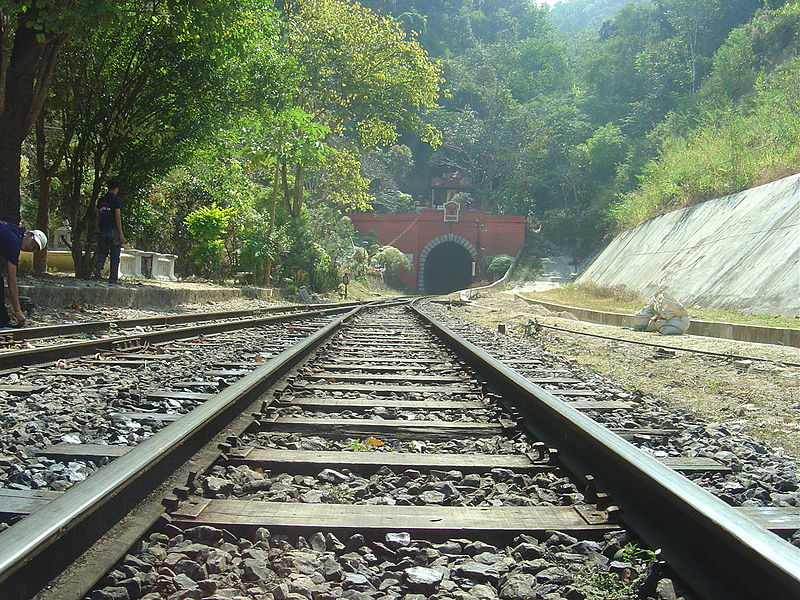Line(s) Northern Line Station code ขน. | Tracks 3 Platforms in use 3 | |
 | ||
Location Tha Pladuk Subdistrict, Mae Tha District, Lamphun Operated by State Railway of Thailand Address Tha Pla Duk, Mae Tha District, Lamphun 51140, Thailand Similar Doi Khun Tan National, Tha Chomphu Railway, Mae Tan Noi Railway, Chiang Mai Railway Station, Nakhon Lampang Railway | ||
Khun tan railway station
Khun Tan Railway Station is a railway station on the Northern Line located in Lamphun Province, Thailand. It is operated by the State Railway of Thailand, and is 683.14 km (424.5 mi) from Bangkok Railway Station. Khun Tan Railway Station is in the Tha Pladuk Subdistrict, Mae Tha District.
Contents
- Khun tan railway station
- The white bridge khun tan railway station pha nam lod
- Khun Tan tunnel
- History
- Train services
- References
Khun Tan Railway Station is the highest railway station in Thailand, at 578 metres (1,896 ft 4 in) above sea level. Around the railway station is the Doi Khuntan National Park, the reason the station exists, which has bungalows run by the State Railway of Thailand, for visitors' use as well.
The white bridge khun tan railway station pha nam lod
Khun Tan tunnel
Two hundred metres from Khun Tan Railway Station, is the Khun Tan Tunnel. It is the longest railway tunnel in Thailand, at 1,352.1 metres (4,436 ft 0 in) in length. Construction took 11 years at a cost of 1.3 million baht. It was finished in 1918.
History
The railway route Bangkok–Chiang Mai had been designed to avoid the Khun Tan Mountains, a barrier between Lampang and Lamphun. The tunnel was built ease trade barriers between the northern and central provinces. Surveys for the tunnel route were started in 1905. Construction began in 1907. First, base pins were set up at a level behind the mountain aligned with the tunnel route so that the tunnel could be blasted to the width needed. Then air compressors were used to drill through the mountain. If these air compressors broke down, then metal chisels were hammered into the rock, explosives inserted and then the rock was blasted to make way for track-laying. The tunnel was finished in 1918 and remains in daily use.
